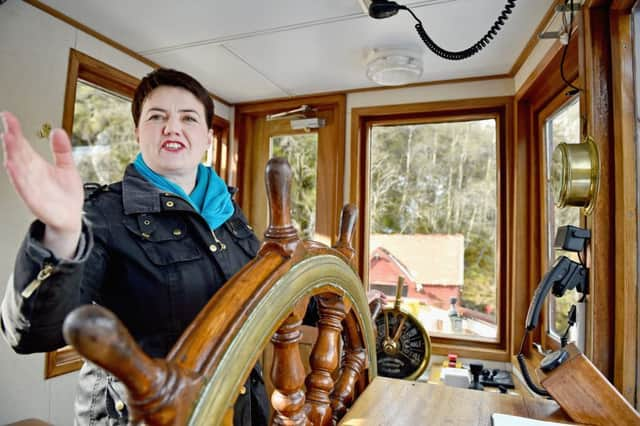John Curtice: Individuals can still produce the one-off surprises


We have long got used to the idea that elections these days are primarily about parties rather than personalities. People supposedly vote for the party whose ideas they like and who they reckon has the best team of leaders. The electoral fate of individual candidates is thought to be largely out of their hands.
But Thursday’s results give the lie to this thesis. For if it were true, the outcome on Thursday night would have been markedly different.
Advertisement
Hide AdAdvertisement
Hide AdNowhere is this more the case than in North-ast Fife. Although a former Liberal Democrat bastion, the party lost it by nine points in 2011, and there seemed little prospect of the seat being recaptured by a party whose support appeared to be utterly becalmed.
Yet Willie Rennie, whose antics on the campaign trail secured him substantial publicity, increased his party’s vote by no less than 15 points, his party’s biggest advance on mainland Scotland. Following on from his unexpected success in winning the Dunfermline UK parliamentary by-election in 2006, Mr Rennie is developing a track record for bringing off electoral shocks.
His Conservative counterpart, Ruth Davidson, already widely respected for her political acumen long before the election campaign, achieved a similar feat. Like Mr Rennie, she also managed to achieve a 15-point increase in support in her local contest in Edinburgh Central, twice as big as that managed by her party across Scotland as a whole.
As a result, she achieved the remarkable feat of moving from fourth place to first.
Party leaders do, of course, have a big advantage over their local rivals in an election campaign. They get to appear a lot on television and radio whereas their fellow candidates do not.
But that is only an advantage if a leader is able to use the publicity to impress themselves favourably on voters. And it appears that extra exposure did not work for Kezia Dugdale.
Her vote fell in Edinburgh Eastern by seven points, little different from the nine-point drop that Labour suffered across Scotland as a whole. The contrast between her performance and that of her rival leaders will do nothing to strengthen her position as Scottish Labour leader.
Indeed, the relative weakness of Ms Dugdale’s performance is underlined by the ability of some of her senior colleagues to buck the Nationalist tide.
Advertisement
Hide AdAdvertisement
Hide AdIan Gray in East Lothian and Jackie Baillie in Dumbarton were both able to defend their seats by limiting the drop in their share of the vote by just one and four points respectively.
Meanwhile, of course, it may well be the case that the fact Labour did as badly as it did across Scotland was not helped by Ms Dugdale’s apparent lack of personal popularity.
Doubtless, for now, Ms Dugdale’s position as leader will be secure because there is no obvious alternative who could perform the job more effectively. But that is not the strongest of foundation on which to build the leadership of a party that is clearly in serious electoral trouble.
• John Curtice is professor of politics at the University of Strathclyde